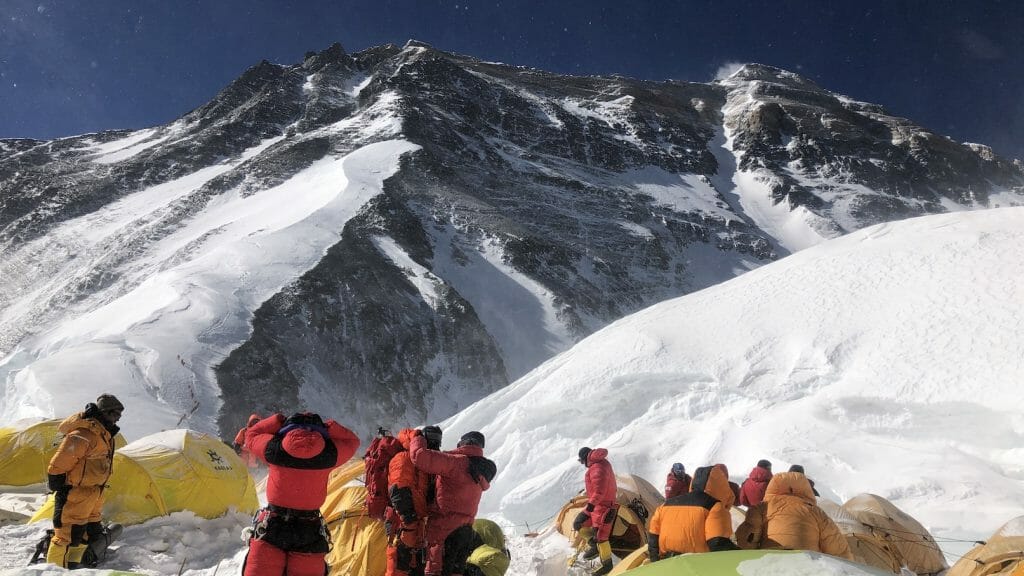I like to say it was The Amazing Race: Mount Everest Edition. I waited in Berkeley, California, for a weather window, jetted to Tibet to take advantage of it, then booked it back down the peak for a whirlwind return trip—all in just 14 days. So many factors had to align to make this two-week door-to-door ascent possible. I gave every ounce of my being to the goal, and I received support from a number of fronts.
I also got a little lucky.
I started climbing mountains seven years ago, after trekking to Everest Base Camp and seeing the Himalaya for the first time. Back in the States, I turned down a full-ride scholarship to grad school in North Carolina, moved to Colorado, and began progressing through the Seven Summits. I always want to see where my limits are, and until I find that line I just keep going.
Mount Everest would be my sixth of the seven. Climbing it on a compressed schedule had always appealed to me. By spending less time on the mountain, you reduce your exposure to germs in Base Camp and to objective hazards on the route. You minimize your loss of muscle mass and fitness while at altitude. You are a stronger athlete for the brief window you are there.
A two-week trip hadn’t crossed my mind until I connected with Alpenglow Expeditions guide and founder Adrian Ballinger. His company offers 35-day “Rapid Ascents” on the North Side of Everest, already a fraction of the time of a traditional expedition. I called him to learn more. Adrian pushed a different agenda.
“I’m looking for someone to do a 14-day itinerary,” he said. “It will be a ‘Lightning Ascent’—the first time it’s ever been tried. Would you be interested?”
I laughed the idea seemed so crazy.
After letting it marinate for a couple days, I started to come around. Why not me? I have a Hypoxico tent. I work in research and development at GU Energy, where I have access to an altitude chamber in the office gym and the company culture revolves around endurance sports. Following a pre-acclimatization protocol with the tent and chamber, I had done “rapid ascents” on my own—a climb in Chile and a few volcanoes in Ecuador. I was already aerobically fit from training for ultramarathons. My one concern, that I’d never been above 7,000 meters before, couldn’t compete with my research-nerd side. Here was an opportunity to combine climbing, endurance training, nutrition, scientific study, and innovation—all the things I love.
I told Adrian I was in: “For science, I’m doing this!”
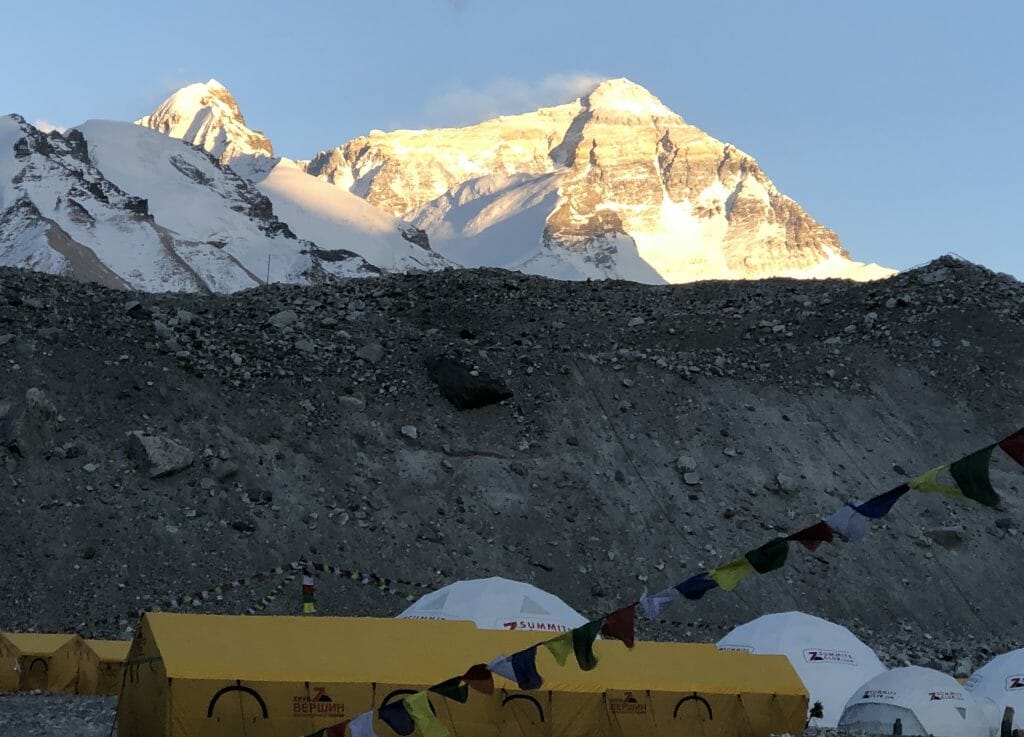
The fact that work supported me in the climb made it easy to fully immerse myself in the project. For training, I reached out to Uphill Athlete and began working with a coach in December 2018. Initially, they weren’t sure how much additional fitness they would be able to get out of me. Even I was skeptical. It ended up being the best thing I did to prepare.
Over those five months leading up to Everest, I became bulletproof. My legs turned to steel from the muscular endurance workouts, both a gym-based strength routine and uphill repeats with a heavy pack. I underwent three rounds of metabolic testing (because again, nerd): once before starting the training, again at a midway point, and a third time before leaving for Everest.
Three months before my departure window, in tandem with my training, I began a pre-acclimatization protocol. I put my step-up box in the altitude chamber in the gym at the GU offices and would spend about 4 hours a day in there, working and exercising. Then I slept in my tent. I joked that I was living in a bubble. On top of getting at least half my day at altitude, I also took advantage of the sauna at my gym after workouts. It is theorized that heat training can encourage altitude acclimatization, just through a different stress.
In the past when I’d done stints in the tent before big climbs, the highest I slept was 13,000 feet. Toward the end of those progressions, I would start to feel a deep fatigue and wouldn’t recover quickly from my harder workouts. It was a different story before Everest. Despite 20-plus-hour training weeks, I was able to recover really well while sleeping at altitudes up to 19,000 feet.
Adrian set my departure window for May 1 through 15. He had already been on the ground in Tibet for about a month, and the weather was not looking promising. There were high winds. It was brutally cold. The rope fixers couldn’t get up the mountain. A high camp blew away and we lost a bunch of supplies. I was on pins and needles. What if this doesn’t happen?
One stressful week passed before I finally got the go-ahead from Adrian: “Book your flights for May 10 and get over here.”
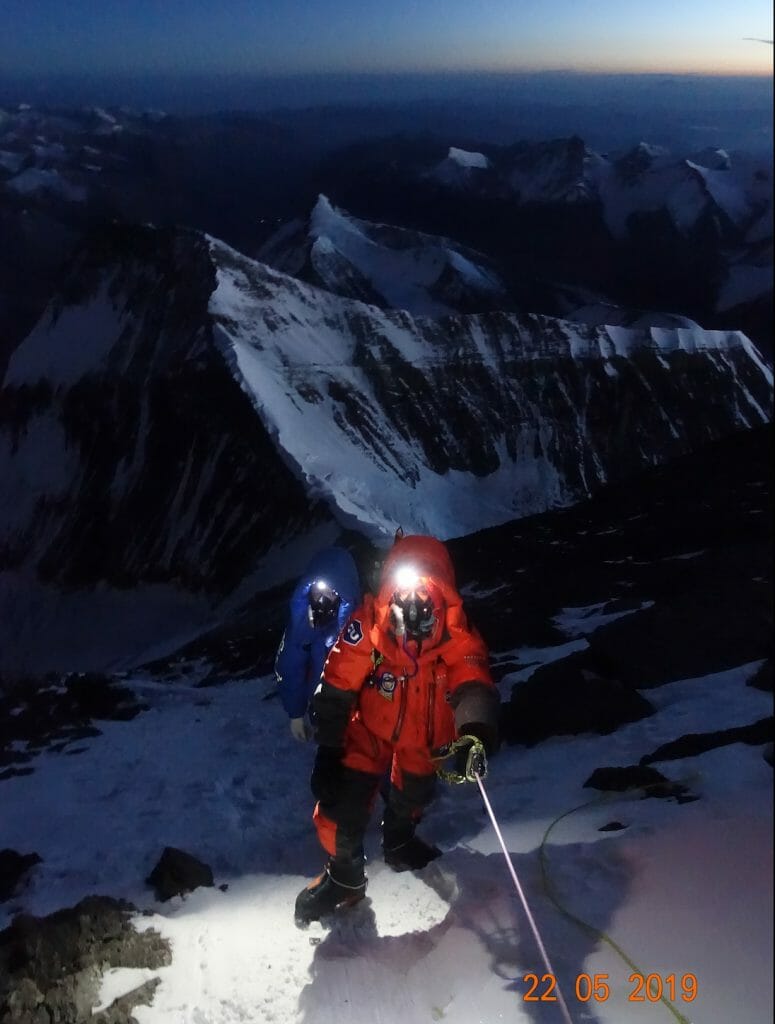
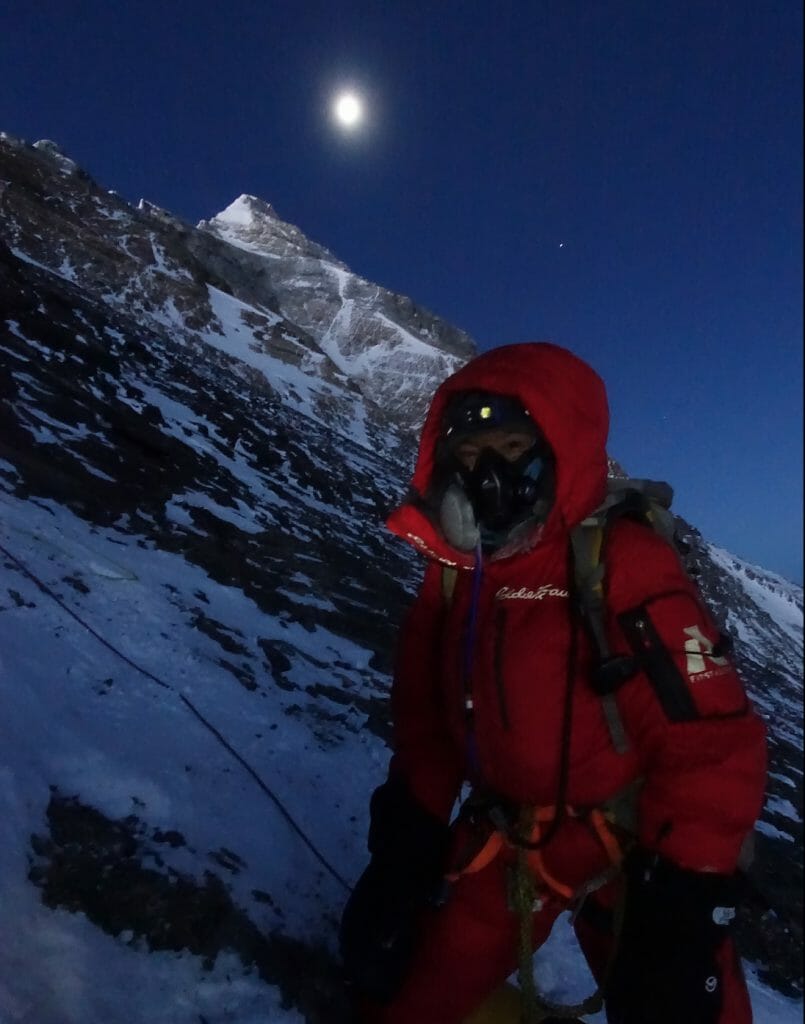
I arrived at a tiny airport in Shigatse, Tibet, after two days of travel. My guide, New Zealand mountaineer Lydia Bradey, picked me up for the 7-hour drive to Base Camp at 17,000 feet. I could tell that my pre-acclimatization had worked. Between finally being there and feeling as strong as I’d ever been, my stoke level hit a new high.
Lydia and I started up the mountain on May 15. She is a badass—the first woman to have summited Everest without oxygen, 57 years old and still crushing it. I absorbed her wisdom like a sponge. Though she had already summited Everest five times, this would be her first attempt from the North Side.
We reached Interim Camp at 19,000 feet, then the next day we made it to Advanced Base Camp at over 21,000 feet. Along the way I tested a custom bar, gel, and drink mix I’d helped develop at GU; each product worked amazingly well. But so much remained out of our control. The high winds persisted, and the ropes still hadn’t been fixed to the summit. We sat and waited. Given the conditions, I accepted that a 14-day trip was probably not in the cards.
Then it looked like a weather window might open for May 22, and Lydia and I got moving. After spending a night at Camp 1 at 23,000 feet, where we started using oxygen, we pushed up to Camp 2 at 25,000 feet.
“I can’t promise the rope fixers will finish in time for you,” Adrian told us over the radio that night. “You might have to turn around and come back down, no guarantees you’ll have another shot.”
Lydia and I decided to go for it. Accompanied by two Sherpas, Mingma Tshering and Pasang Tendi, we left Camp 2 at 1:45 a.m., bypassing Camp 3 where most parties start their summit bid. We could see the route fixers ahead of us. They were on track to finish, but it also meant we were the first ones to use the ropes. About 250 feet below the summit, as we followed a fixed line attached to a rock anchor, the anchor pulled. Though the rock missed us, it was unnerving. I had trouble trusting the lines after that. We had passed dead bodies along the route; I couldn’t shake thoughts of those climbers who’d lost their lives in pursuit of their highest dream.
Our foursome pressed upward and it wasn’t long before we met the rope fixers on their way back down. They gave us enthusiastic hugs and high-fives. We would be the first climbing members to summit from the North Side for the season, and the only ones that day.
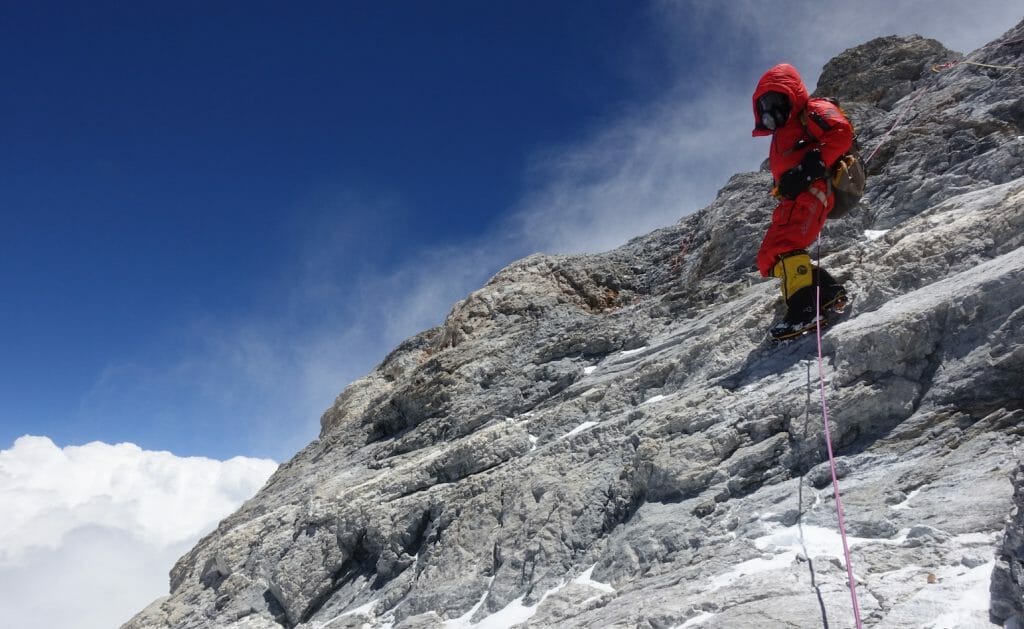
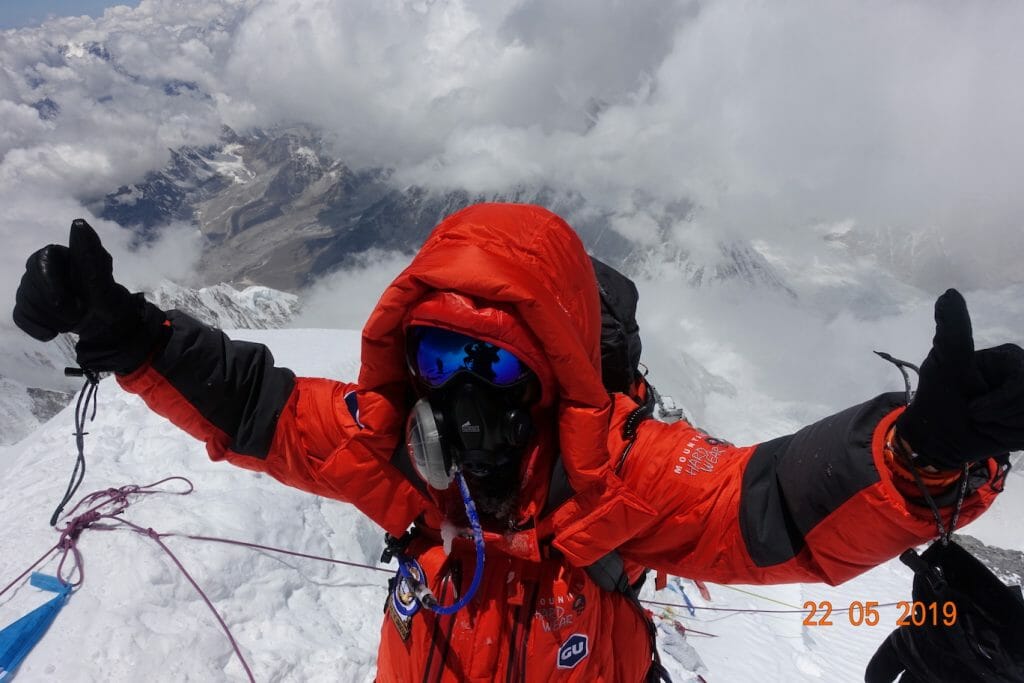
We reached the top at 11:45 a.m. on May 22, 2019—the same day the infamous bottleneck formed on the mountain’s South Side route. By the time we summited, which was relatively late in the day, those climbers had retreated. There were no crowds. For the 20 minutes we were up there, the four of us had the top of the world to ourselves. Are we on the right mountain? Did we make a wrong turn somewhere? The wind was calmer than forecast, and the sun was out. It was warm enough that I was sweating through my down suit. We could see for miles and miles. I basked in the glow of this once-in-a-lifetime moment. I felt so fortunate.
Then the weather shifted and it was time to descend. The route had been more technical and exposed than either Lydia or I had anticipated. One of the most challenging sections, the Second Step, was especially terrifying on the way down. With 10,000 airy feet below me, I struggled to peer over the belly of my giant down suit to locate the next ladder and the next rung. I felt like I was climbing blind.
We made it back to Camp 2 after about 15 hours, and I crashed. I sat down outside my tent and started to cry. It was the hardest summit day I had ever experienced. It was also my first time climbing with an oxygen mask. Because it was such a hassle to pull the mask away from my mouth to get food and water in, I had fallen behind on my nutrition, consuming a measly 200 calories and a half liter of fluids. My inadequate fueling continued as we descended to Base Camp the next day, another 13 hours on the move. Despite barely eating or drinking over a full 28 hours of intense activity, I was able to perform. I didn’t totally bonk. I was tired overall, but my legs never got sore. My training had paid off.
A car arrived just before midnight to take me to the airport for my 10 a.m. flight. Thirty hours later, I wheeled my luggage through Customs at SFO—a single hour shy of the two-week deadline. My parents and a few friends were there to welcome me. They knew how much time and energy I had invested in this goal. It was the hardest I’d worked for anything in my life. They cheered when they saw me. It was the best way to end the trip.
A post-climb DEXA scan showed that I hadn’t lost any weight or muscle tissue on Everest. I was blown away, especially given my nutrition issues with the oxygen mask. I called Uphill Athlete the following week: “Guys, I’m ready to start training again.”
Now that I’ve redefined my limits, I’m curious to see how much farther I can push the line.
Cover photo: Climbers prepare to climb to Camp 2 up the northern route from Camp 1. Roxanne Vogel Photo.

